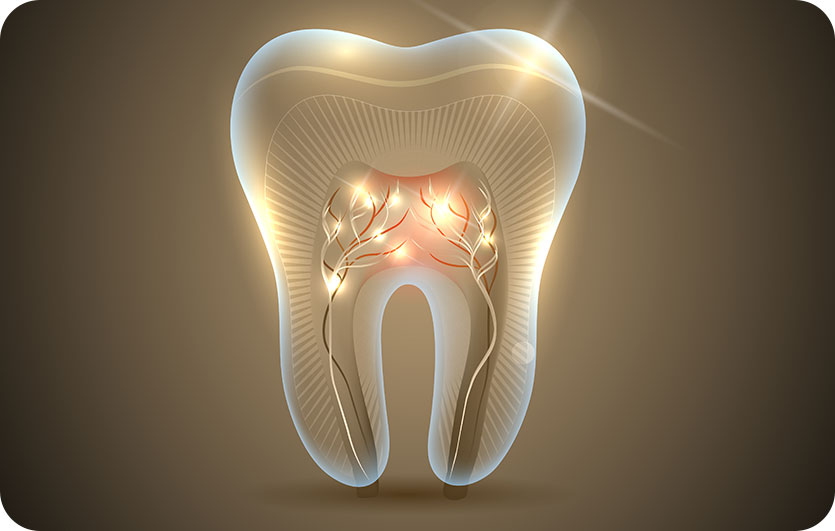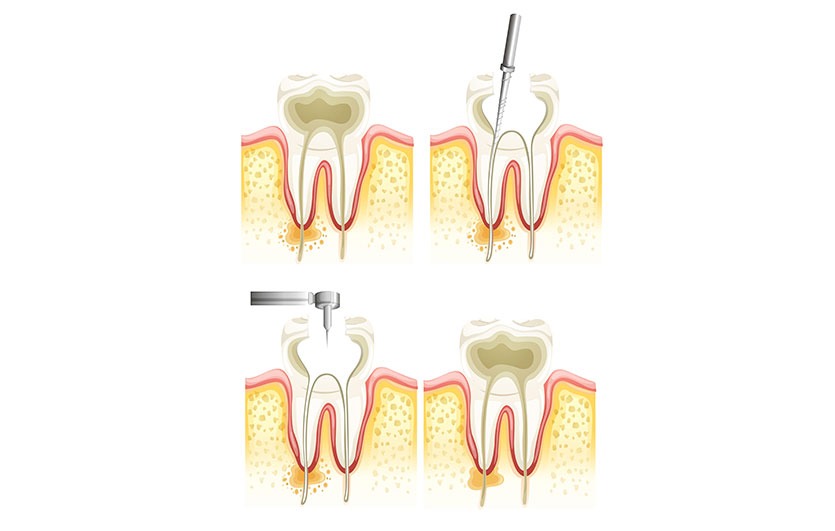First, a local anesthetic will be administered to ensure that you remain completely comfortable during the procedure. After the tooth is numb, a small protective shield called a “dental dam” is placed over the area in order to isolate the tooth and keep it clean and free of saliva during the procedure. Next, an opening will be made in the surface of the tooth, and very small instruments will be used to clean the pulp from the pulp chamber and root canals. Infected pulp is made up of nerves, connective tissue, and blood vessels that help the tooth grow. The infected pulp is removed in order to eliminate bacteria, prevent infection, and save the natural tooth. Once the infected pulp is removed, the space is shaped for a filling. After the space is cleaned and shaped, the root canals will be filled with a biocompatible material to completely seal the root canals. Most often, a temporary filling is placed to close the opening. After the final visit, you will return to your dentist to have a crown or restoration placed on the tooth to protect and restore it to full function.







